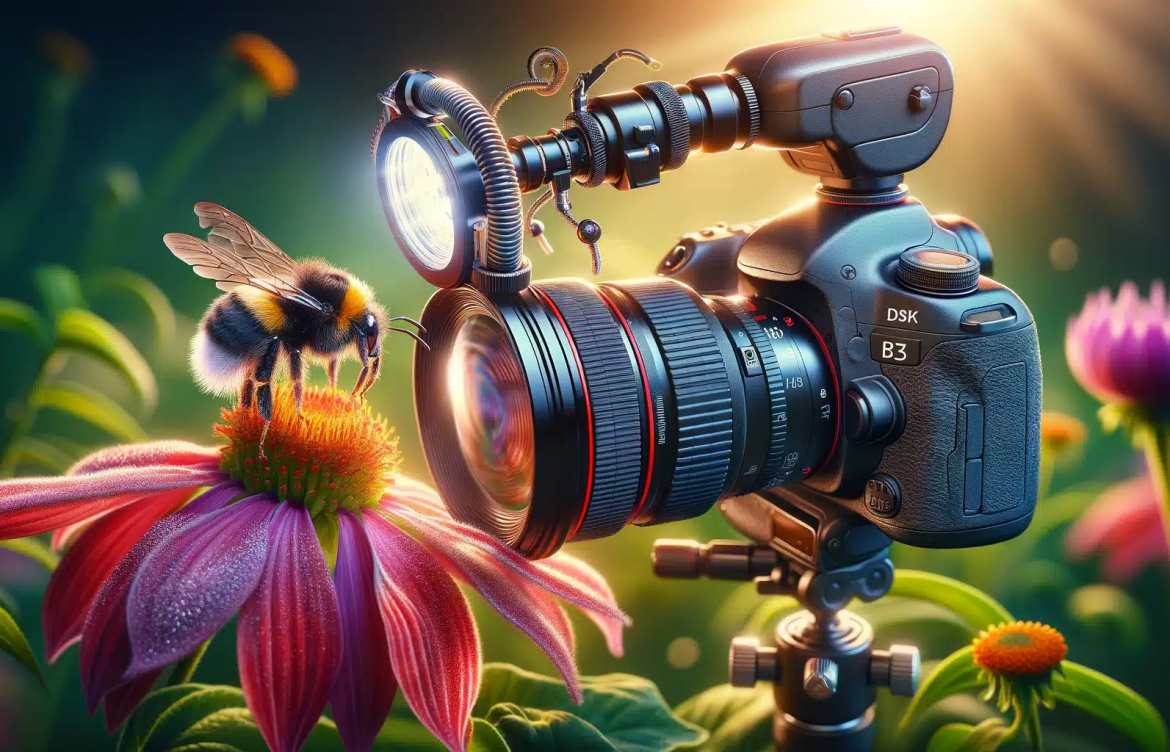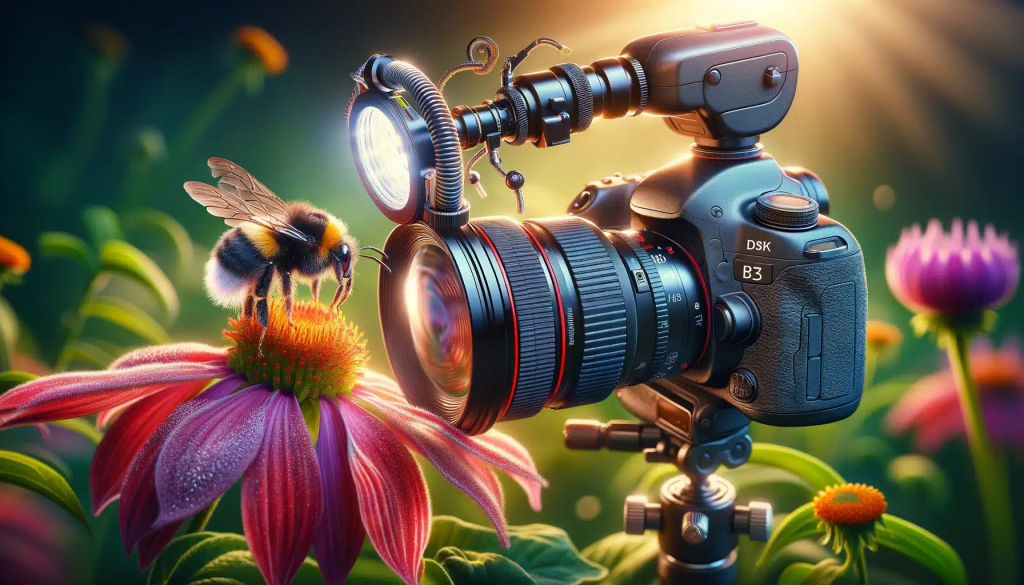
Everything you need to know about Macro Photography.

Macro photography is a fascinating genre of photography that focuses on capturing small subjects or details at close range, revealing aspects of the world that are often invisible to the naked eye. This type of photography brings a unique perspective to the ordinary, allowing viewers to see intricate details and textures that are typically overlooked. From the delicate patterns on a butterfly’s wings to the complex structure of a snowflake, macro photography unveils a world of beauty and complexity.
What is a Macro in Photography?

In photography, a macro refers to a type of close-up photography where the subject is captured at a life-size or greater magnification. Technically, a macro photograph has a reproduction ratio of at least 1:1, meaning the size of the subject on the image sensor is equal to or greater than its actual size in real life. This allows photographers to capture extraordinary detail, making it possible to see minute features that are not visible to the naked eye. For more details on macro photography, visit Nikon’s guide to macro photography.
How Do I Take a Macro Picture?
Taking a macro picture involves several steps and considerations to achieve the desired results. Here’s a basic guide:
- Choose the Right Equipment: A macro lens is essential for capturing high-quality macro images. These lenses are designed to focus closely and provide a high level of detail. Extension tubes or close-up filters can also be used to achieve macro-like effects with standard lenses. B&H Photo Video provides a comprehensive guide on choosing macro photography equipment.
- Use a Tripod: Stability is crucial in macro photography to avoid blur caused by camera shake. A sturdy tripod helps maintain a steady frame. Digital Photography School offers tips on essential macro photography gear, including tripods.
- Focus Manually: Autofocus can struggle with close-up subjects, so manual focusing is often more reliable. Use live view mode to zoom in and fine-tune the focus. Photography Life provides a detailed guide on focusing techniques for macro photography.
- Control Lighting: Good lighting is key. Use natural light whenever possible, and consider using diffusers to soften harsh shadows. A ring light or external flash can help illuminate your subject evenly. For lighting tips, check out PetaPixel’s article on macro photography lighting.
- Mind the Depth of Field: Macro photography often has a very shallow depth of field, which means only a small part of the image will be in focus. Use a smaller aperture (higher f-number) to increase the depth of field. Learn more about managing depth of field at Adorama Learning Center.
- Experiment with Composition: Try different angles and compositions to find the most interesting perspective. Pay attention to the background to ensure it complements your subject without distracting from it. Smashing Magazine provides composition tips for macro photography.
- Post-Processing: Editing software can enhance details, adjust colors, and correct any exposure issues. Focus stacking, where multiple images with different focus points are combined, can also be used to achieve greater depth of field. Adobe’s guide to macro photo editing is a great resource for post-processing techniques.
What is Micro vs Macro Images?
The terms “micro” and “macro” are often used interchangeably, but they refer to different scales of photography. Macro photography deals with capturing small subjects at a life-size or greater magnification, typically up to 10x. Micro photography, on the other hand, involves even higher magnifications, usually achieved through a microscope, allowing for the examination of minute subjects at the cellular or molecular level. For a deeper dive into the differences, check out Cambridge in Colour’s article on macro and micro photography.
What is the Key to Macro Photography?
The key to successful macro photography lies in attention to detail and patience. It’s important to focus on the small things and be willing to spend time setting up the perfect shot. Mastery of lighting, focus, and composition are critical, as is an understanding of your subject’s behavior if you’re photographing living organisms. Persistence and experimentation are essential as well, as capturing the perfect macro shot often requires trial and error. Expert Photography offers insights into the critical aspects of macro photography.
Is Macro Photography Easy?
Macro photography can be challenging due to the technical precision and patience required. The shallow depth of field and the need for perfect focus and lighting can make it difficult to capture sharp, well-composed images. However, with practice and the right techniques, it becomes easier to produce stunning macro photographs. It’s a rewarding genre that offers a unique way to explore and appreciate the intricacies of the world around us. For beginners, Photography Life has a helpful guide to get started.
Who is the Most Famous Macro Photographer?
One of the most renowned macro photographers is Robert Mapplethorpe, known for his striking close-up images of flowers. His work is celebrated for its precision, attention to detail, and artistic composition. Other notable macro photographers include David Liittschwager, known for his wildlife close-ups, and Thomas Shahan, who specializes in macro images of insects. Learn more about Robert Mapplethorpe at the Getty Museum.
What Profession is Macro Photography?
Macro photography is often pursued by professionals in various fields such as scientific research, nature and wildlife photography, and product photography. In science, macro photography is used to document and study small subjects, such as insects, plants, and materials. In the commercial sector, it is commonly employed to capture detailed images of products, especially for advertising and online sales. For more information on career opportunities, National Geographic provides a resourceful guide on finding your niche in photography.
What is Interesting About Macro Photography?
What makes macro photography particularly interesting is its ability to reveal hidden worlds. It allows us to see the extraordinary in the ordinary, bringing attention to the intricate details of everyday objects and natural elements. This perspective can transform mundane subjects into fascinating works of art, highlighting textures, patterns, and structures that go unnoticed in our daily lives. For inspirational macro images, check out the British Journal of Photography.
What is Macro Famous For?
Macro photography is famous for its ability to showcase the intricate beauty of small subjects. It’s known for transforming tiny details into captivating, large-scale images that highlight the complexity and elegance of the natural world. Macro photography is also celebrated for its use in scientific research, where it helps document and study subjects in great detail, contributing to our understanding of biology and the natural environment. Discover more about the applications of macro photography at Science Photography.
In conclusion, macro photography offers a unique lens through which we can explore and appreciate the finer details of our world. Whether for artistic expression or scientific study, it provides a powerful tool for unveiling the beauty and complexity that surrounds us.
Find more about Macro Photography here:
- Nikon’s guide to macro photography
- B&H Photo Video guide on macro photography equipment
- Digital Photography School: Essential Macro Photography Gear
- Photography Life’s Macro Photography Guide
- PetaPixel: Controlling Lighting in Macro Photography
- Adorama: Basics of Macro Photography Depth of Field
- Smashing Magazine: Macro Photography Tips and Techniques
- Adobe Guide to Macro Photo Editing